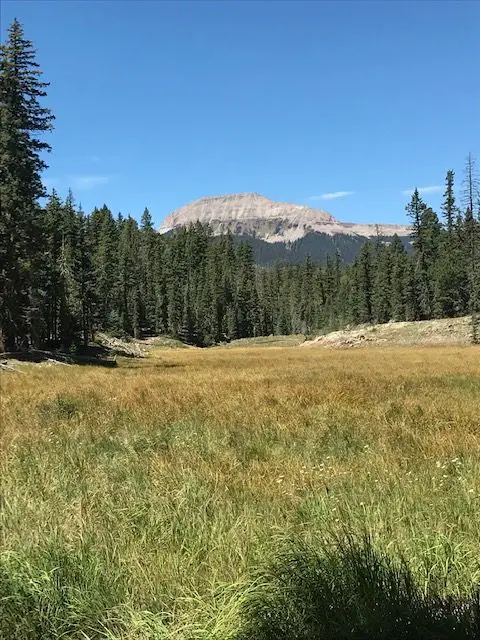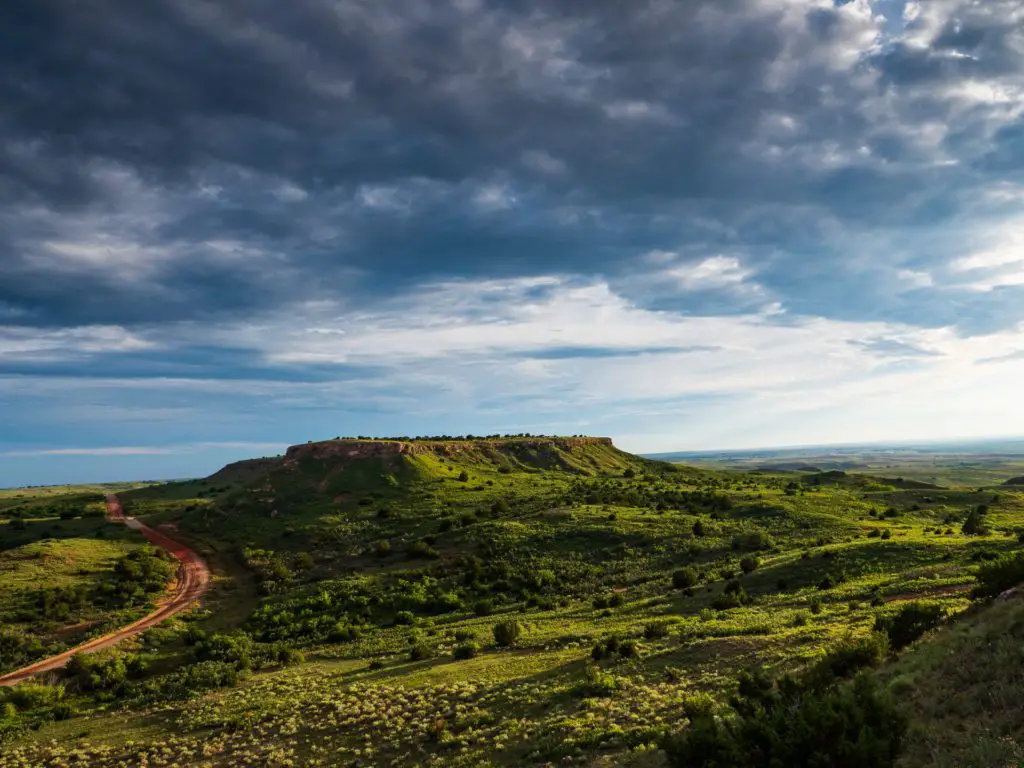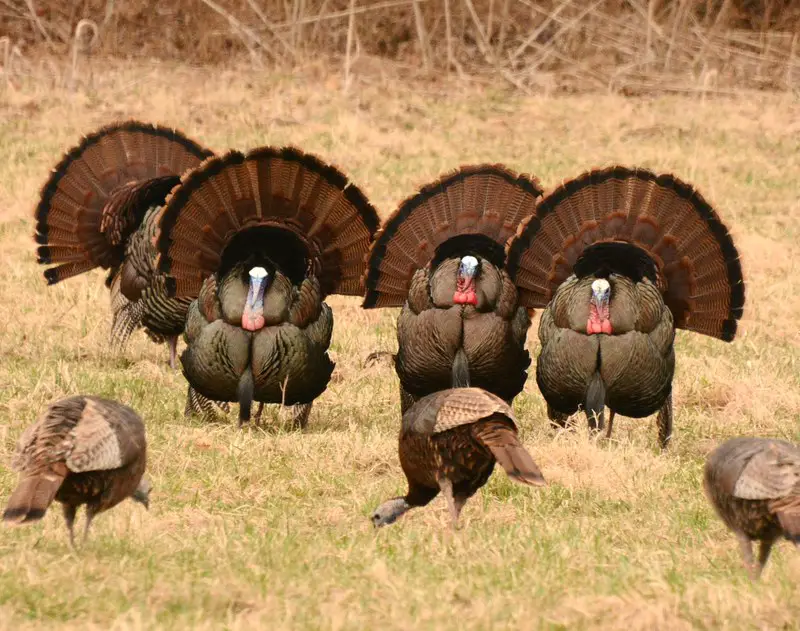
Colorado may be the greatest state in the continental United States for the outdoorsman.
In addition to its world-class skiing and hiking, Colorado has amazing hunting for elk, mule deer, black bear, mountain lion, mountain goats, and bighorn sheep. On top of that, the state has a variety of upland opportunities including grouse, prairie chicken, chukar, pheasant, and quail.
But today, we’re going to talk Colorado turkey hunting. Colorado offers opportunities for two subspecies: the Merriam’s and the Rio Grande. Colorado also has a vast amount of public land and plenty of over-the-counter licenses.
If you’re planning to make like Lloyd and Harry and head to Colorado this spring (or fall), this guide provides a great overview on what you need to know for your hunt.
Note: While I try to provide the most accurate information possible, always refer to the official regulations published by Colorado Parks and Wildlife before taking part in any hunting activities.
Does Colorado have good turkey hunting?
Yes!
I ranked Colorado as the third-best state for do-it-yourself Merriam’s in my recent article on the subject.
An estimated 22,408 hunters pursued turkeys in the spring of 2021 according to Colorado Parks and Wildlife. On over-the-counter hunts, the estimated harvest was between 4,639 and 5,795 turkeys (an estimated 24.6 percent success rate). On limited license hunts, the estimated harvest was between 539 and 663 turkeys (an estimated 43.6 percent success rate).
As you can tell from these numbers, your chances of taking a gobbler are much higher on a limited license hunt than an over-the-counter hunt. However, a nearly 25 percent success rate is nothing to sneeze at either.
The trick to Colorado turkey hunting is finding them. These turkeys are in BIG COUNTRY! You can hike miles and miles looking for these birds. You may be in them one day and by the next day they may be gone.
Once you find these birds, killing them is not as hard as you might think. Merriam’s tend to be very responsive to calling. Moreso than high-pressured Easterns. So if you can find them, you can likely get them to play the game.
When is turkey hunting season in Colorado?
Colorado offers nearly five months of turkey hunting through three unique seasons: Spring, Fall, and Late Season.
Spring season begins in early April and goes out at the end of May.
Fall season starts at the beginning of September and finishes at the end of October.
Late Season goes from mid-December to mid-January. These hunts are for private land only.
Where should I hunt turkeys in Colorado?
When deciding where to hunt turkeys in Colorado, you first need to decide which subspecies you are interested in hunting. The Rio Grande subspecies inhabits the eastern portion of the state. The west is home to the Merriam’s subspecies.
Like many western states, a large percentage of huntable land in Colorado is public. Depending on the license you hold, you should have a lot of area to hunt. That doesn’t mean it will be easy though.
Though Colorado has ton of prime turkey habitat, they will only be located in pockets throughout the countryside. Check different elevations as the turkeys will be higher or lower depending on the time of the season you are hunting.
Public land Colorado turkeys receive quite a bit of pressure, especially on opening day. As always, try to get away from roads as much as possible to reach less pressured birds. A good mapping software will help tremendously in scouting, locating birds, and not getting lost!
Keep in mind that snow and National Forest road closings may limit your plans when hunting in the early spring season. Always have plans A, B, and C.
Many Rio Grande turkeys in Colorado will be located on public land. If you want to pursue Rios in Colorado, consider lining up an outfitter or gaining permission to hunt private land before you draw or buy a tag.

How much is a turkey tag in Colorado?
The price of a turkey license in Colorado depends on several factors: residency, season, over-the counter or limited, and adult or youth applicant.
All license holders must have an annual Habitat Stamp which costs $10.59 for both residents and nonresidents.
Residents pay $31.41 for a spring turkey license and $26.12 for a fall turkey license. Youth licenses are $16.58.
Nonresidents pay $160.67 for a spring or fall turkey license. Youth nonresidents must pay $107.69 for a spring or fall license.
In addition, application processing fees ($7.13 for residents, $9.17 for nonresidents) will be charged.
Are Colorado turkey hunting tags over-the-counter?
Colorado has both over-the counter turkey licenses and limited licenses.
Over-the-counter Licenses
Over-the-counter (OTC) licenses are available before and during the season. The number of hunters who can purchase them is not limited. They can be purchased online, over the phone, at Colorado Parks and Wildlife locations, or through brick-and-mortar authorized vendors in Colorado.
Many units can be hunted on an OTC license. OTC licenses can not be obtained through the draw process.
Limited Licenses
Limited license hunts regulate the number of hunters in a given area on given dates. These licenses must be applied for through a draw system.
The deadline to apply for a limited license in the spring is February 1. Hunters wanting to apply for a fall limited license must apply by May 31.
Hunters who are not successful in drawing their first hunt choice will receive a preference point. Priority in the draw will be given to hunters with the most prefence points.
Limited license hunts provide an excellent opportunity for hunters to hunt turkeys that have not been pressured as much. Hunters will not have to worry as much about other hunters messing their hunt up. The downside is that it may take several years to draw a license.
What is the bag limit?
The turkey bag limit varies by season. In the spring, hunters can take up to two bearded gobblers. However, only one of these toms can be taken on a limited license. The other must be taken on an over-the-counter license.
During the fall season, you may harvest one turkey of either-sex.
In the late season, only two beardless turkeys may be harvested. These can only be harvested on private land.
Can you turkey hunt with a rifle in Colorado?
During the spring Colorado turkey hunting season, rifles are illegal for use. However, you are allowed to use rifles during the fall and late-season hunts.
Rifles, as well as handguns, can be muzzle-loading, centerfire, or rimfire. The bullet must be at least 17 grains and have at least 110 foot-pounds of energy at 100 yards from the muzzle according to the manufacturer’s energy rating. This pretty much rules out .22 Long Rifle as a legal cartridge, but allows for many other options when turkey hunting in Colorado.
Shotguns, bows, and crossbows are all legal during all Colorado turkey hunting seasons. Shotguns must be 10 gauge or smaller shooting shot size #2 or smaller. Shotguns must be plugged if they are capable of holding more than three shells in the chamber and magazine.
Are there any special or unique laws for Colorado turkey hunting?
One law that may catch many hunters unaware is the requirement to leave proof of sex attached to your turkey harvest during transport for spring hunts. So don’t cut that beard off your gobbler in excitement! You’ll need to leave it hanging until you get him home.
Conclusion
Colorado turkey hunting can be extremely challenging both physically and mentally. Hiking for days without seeing or hearing turkeys can take it’s toll on the hunter.
Just remember not to take things too seriously. Turkey hunting is a vacation. Enjoy the beautiful scenery and other varieties of wildlife that Colorado has to offer.
And when you finally stumble across a flock of public land Merriam’s, it will all be worth the work you put in!



